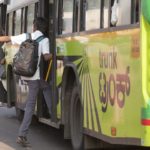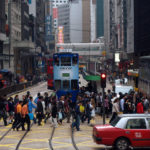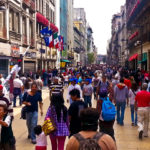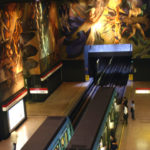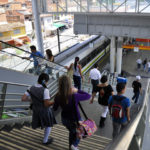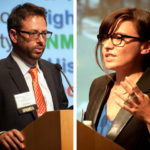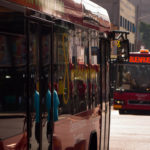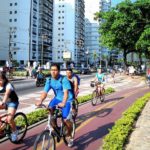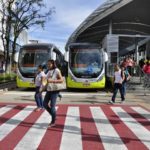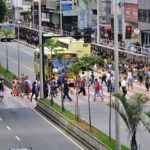Posts in the 'Integrated Transport' category
In many parts of the world, the bus is suffering from a public image crisis. According to a report by the US Federal Transit Administration, many people already look down on public transport in general, and the bus in particular ...

What will the city of the future look like? How can we unlock the potential of urbanization to create safe, accessible and prosperous societies? At Transforming Transportation 2015 – the annual conference co-organized by the World Resources Institute and the World Bank– we learned about ...

Previously on TheCityFix, we took you through the initial steps of EMBARQ and IDEO’s project to explore how human-centered design thinking can be put to work for sustainable urban mobility. We’re asking a bold question – what if there were ...

A successful transport system connects people with their city not only physically, but also culturally. While public transport can sometimes be perceived as anonymous and impersonal, metro stations that engage culturally with the communities they serve are much more likely ...

Are you satisfied with the quality of life in your city? In São Paulo, overall perceptions of quality of life increased over the past year for one-third of the population, and remained stable for half according to the city’s Municipal ...

Latin America’s rate of urbanization peaked in the 1960s and 1970s, during which the region’s cities saw unprecedented rural to urban migration. In the following decades, violence in many of these population-drained rural areas accelerated the flow of rural migrants ...

Last week’s Transforming Transportation conference put forth multiple innovative ideas for how cities can transform mobility to become more socially, environmentally, and economically sustainable. Speakers included former heads of state like Mexico’s Felipe Calderón, road safety champions like former New ...

This article was originally published on January 15, 2015 by the Thomson Reuters Foundation. Last year marked an important tipping point: for the first time, half of the global population lives in cities. Cities currently add 1.4 million people each ...

Transforming Transportation (#TTDC15) is the annual conference co-organized by EMBARQ, the sustainable urban transport arm of the World Resources Institute’s (WRI) WRI Ross Center for Sustainable Cities, and the World Bank. This year’s conference focuses on Smart Cities for Shared Prosperity, and takes place on ...

Transforming Transportation (#TTDC15) is the annual conference co-organized by EMBARQ, the sustainable urban transport arm of the World Resources Institute’s (WRI) WRI Ross Center for Sustainable Cities, and the World Bank. This year’s conference focuses on Smart Cities for Shared Prosperity, and takes place on ...

Transforming Transportation (#TTDC15) is the annual conference co-organized by EMBARQ, the sustainable urban transport arm of the World Resources Institute’s (WRI) WRI Ross Center for Sustainable Cities, and the World Bank. This year’s conference focuses on Smart Cities for Shared Prosperity, and takes place on ...

Transforming Transportation (#TTDC15) is the annual conference co-organized by EMBARQ, the sustainable urban transport arm of the World Resources Institute’s (WRI) WRI Ross Center for Sustainable Cities, and the World Bank. This year’s conference focuses on Smart Cities for Shared Prosperity, and takes place ...

In June 2014, the Government of India announced its ambitious plan to build smart cities across the country. This plan will be administered by the Ministry of Urban Development, and will focus on building new smart cities and redeveloping existing ...

Every year, more than 1.2 million people die in traffic crashes worldwide, equivalent to nearly five Boeing 747 plane crashes every day. As developing economies grow and private car ownership becomes more mainstream, the number of associated crashes and fatalities ...

Traffic safety has become an urgent issue for cities around the globe, with traffic deaths claiming over 1.2 million lives per year according to the World Health Organization (WHO). Without proper action, this unacceptable trend is expected to make road ...

Page 22 of 135« First...10...212223...3040...Last »














